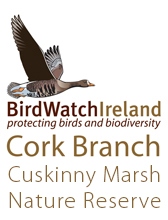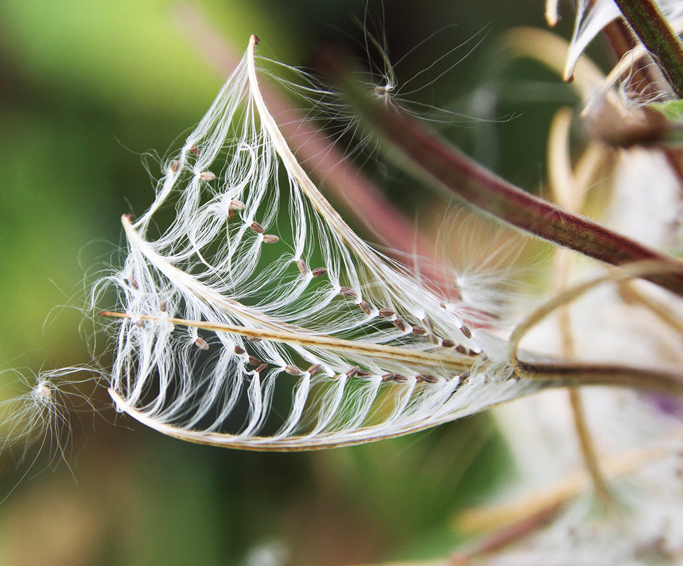Flora
BOTANICAL SURVEYS OF CUSKINNY MARSH NATURE RESERVE
In 2018, with support from Cork County Council Environment Directorate through the Local Agenda 21 Partnership Fund we were able to repeat a botanical survey of the reserve, first carried out by botanist Tony O’Mahony in 1993. This time Tom Gittings, Ecologist, carried out the survey and you can download the report of the survey here 2018 BWI Cuskinny Marsh Nature Reserve Botanical report.
The following report was prepared by Tony O’Mahony following a single visit in June 1993.
General Description
This coastal reserve is roughly rectangular in shape (save for an attenuated northwesterly strip), while its longer axis is orientated in a NW-SE direction. The reserve (which consists of Cuskinny Lake and its marshy, plant-fringed margins) is bounded to the north, west and south by roadways and to the east by an earth-and-stone bank and a backing strip of deciduous woodland.
The reserve is very attractive in appearance, and the public has ready access to the lake from the western and southern roadways. However the woodland on the eastern side of the lake seems unfrequented, and it is recommended that this situation be maintained. In any case the marshy nature of the woodland makes it unsuitable for public use.
The range of plant habitats include roadways, coastal rocks and walls, hedge banks, woodland, damp meadows, marshy ground, freshwater streams, and brackish lagoon (i.e. the lake. These habitats in turn provide a corresponding diversity of plant species. Nevertheless, the number of plant species recorded on my June 1991 visit was quite low (c.135 species). While a number of other species undoubtedly remain to be added to the list, the low diversity of species can be satisfactorily accounted for by the imbalance in size of the respective habitats. For example Cuskinny Lake dominates the reserve, yet its flora is depauperate, consisting of an abundance of relatively few salt-tolerant (halophytic) plants. By contrast the woodland and roadway habitats are merely linear strips and thus their flora is necessarily limited.
As would be expected, the somewhat remote woodland shows the least sign of disturbance by man. In stark contrast the westerly roadway margins have been greatly disturbed, as is evident by the presence here in abundance of many noxious weedy plants such as Creeping Thistle (Cirsius arvensis), Spear Thistle (Cirsium vulgare), Smooth Sow-thistle (Sonchus oleraceus), Butter Dock (Rumex obtusiflorius) and Rat-tail Plantain (Plantago major) etc. Additionally, considerable rubble-deposition has taken place in part of zone B in the past, raising the level of the ground and superimposing a warm, dry, porous habitat over a periodically inundated, saline meadow. The present day flora of this zone therefore has two quite seperate elements – a brackish meadow flora representative of warm dry habitats, which includes such species as Oxe-eye Daisy (Leucanthemum vulgare), Elder (Sambucus nigra), Ash (Fraxinus excelsior) and the beautiful naturalised shrub, Purple Buddleia (Buddleja davidii).
Of the few garden plants that have become naturalised in the reserve, three are a welcome addition. The spring flowering Three-cornered Leek (Allium triquetrum) with its clusters of white pendulous flowers, the summer flowering Purple Buddleia or Butterfly bush (Buddleja davidii) with its white felted leaf undersides and long spikes of purple flowers that, as the name suggests, are a great attraction for butterflies, and lastly, the autumn flowering montbretia (Tritonia x crocosmiflora) with its brilliant clusters of orange – or amber-coloured flowers and sword shaped leaves.
The two remaining naturalised plants are far from desirable and their presence could well be done without. Of these Travellers Joy (Clematis vitalba) is a woody climber that scrambles over other vegetation and produces a dense carpet of green leaves that obliterates everything else! At present it is confined to the very north-westerly corner of the reserve (the small bridge carrying the main road to Belvelly Bridge?) but in time it could well become a problem here. Particularly worrying however, is the abundance of Winter Heliotrope (Petasites fragrans) along the western roadway. This winter flowering plant was introduced into Ireland and Britain from continental Europe around 1800. The object of the introduction was to extend the honey-producing season (its spikes of beautifully vanilla-scented are produced from November to January). Given its rampagious habit however, Winter Heliotrope soon fell out of favour, was ousted from gardens, and quickly became established in the wild. Today it poses a grave threat to our native flora, Its carpets of ground hugging, rounded leaves smothering most other plants. With its stout underground rhizomes, this pestilential plant can quickly colonise new sites, ranging from woodland and bone dry pastures and roadsides, to moderately damp habitats – which makes it a veritable “superweed”! Consequently, eradication of this species should be given top priority!.
Lastly some fine tree specimens occur through out the reserve. For example, the woodland has some massive Ash (Fraxinus), Oak (Quercus robur) and the far more frequent Q. petraea, and *Horse Chestnut (Aesculus hippocastanum) while the western roadway (embracing part of Zone B, D,and F) has excellent specimens of Oak, Crack Willow (Salix fragilis), White Willow (S. alba) and Common Sallow (Salix cinerea).





